Days Thirteen, Fourteen & Fifteen: Old Delhi and New Delhi
Old Delhi and New Delhi Circa 1200-Present
The two-week trip to South India with my husband Manoj, and our daughter’s in-laws, Drs. Young Woo Choi and Young Soon Choi was an unforgettable experience. This is the last post about our site seeing in Old Delhi and New Delhi. Delhi is replete with Hindu, Buddhist, Sikh and Jain monuments but out of them all, Mughal monuments are outstanding.
Qutab Minar is the tallest brick tower in the world. Located in New Delhi, the 240 feet high tapering tower is 47 feet in diameter at the base and 9 feet at the peak. The Qutab Complex includes Emperor Asoka’s iron pillar, two tombs, a gateway and a madrassa. Qutub-ud-Din Aibak, the founder of the Delhi Sultanate, built it in 1200 in red sandstone and white marble. Inside the tower, a circular staircase with 379 steps leads to the top.
Humayun’s son Akbar commissioned Humayun’s Tomb in 1569-70 in Delhi. This was the first garden-tomb built by the Mughal emperors on the Indian subcontinent and the first structure to use red sandstone at such massive scale.
Jama Masjid in Old Delhi is one of the largest mosques in India. Built by Mughal emperor from 1644 to 1656, the mosque has three gateways, four towers and two minarets constructed of red sandstone and white marble. It’s courtyard can accommodate more than 25,000 people.
Chandni Chowk (Moonlight Square) is one of the oldest and busiest wholesale markets in Old Delhi. Located close to the Red Fort (not to be confused with the Red Fort, Agra), it was built by Emperor Shah Jahan and designed by his favorite daughter, Jahanara in 1650. The bazaar, which was shaped as a square, was given further elegance by the presence of a pool in the centre of the complex that shimmered in the moonlight. Later a clock tower was constructed over it.
Raj Ghat, the memorial to Mahatma Gandhi, is located on the bank of Yamuna River. A stone footpath flanked by lawns leads to the walled enclosure that houses the memorial. A black marble platform marks the spot of Gandhi’s cremation on 31 January 1948, a day after his assassination. An eternal flame burns at one end of the booth.
Lotus Temple, Bahai House of Worship located in New Delhi is made of white marble from Greece. It opened in 1986. Inspired by the shape of a lotus flower the building is composed of 27 freestanding marble-clad “petals” arranged in clusters of three to form nine sides. Its nine doors open onto a central hall. The indoor space can hold up to 2,500 people. No pictures, statues or images are displayed within. No pulpits or altars are incorporated in its architectural design. Along with its nine surrounding ponds and the gardens, the Lotus Temple comprises 26 acres.
Dear Readers, thank you for giving me this opportunity to share the photographs and description of my recent trip to India! I am glad to have shared it with you.
Wishing you all a peaceful, adventurous and brightly shining 2016!
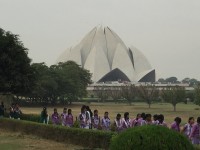

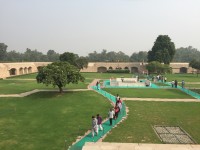
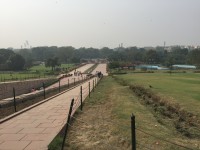
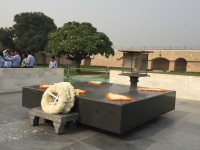
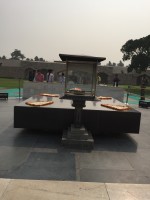


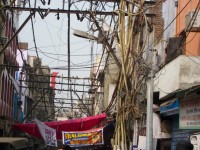
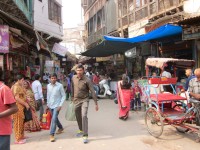

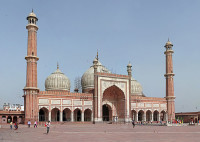
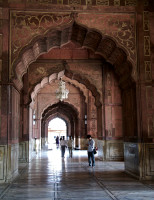
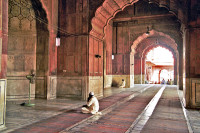
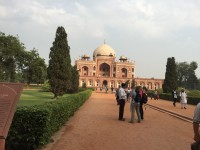
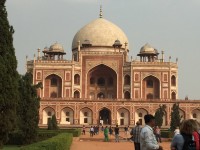
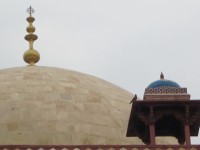
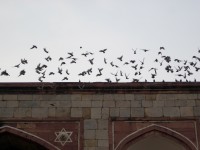
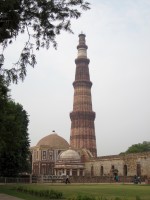
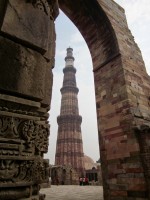
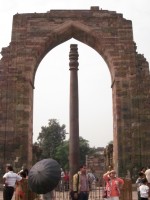
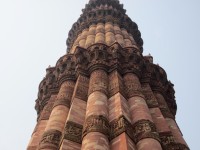


Dr.Indira Kapoor
Thanks and congrats, Madhu, for another beautifully expressed write up and great set of photos. Enjoyed reading it.